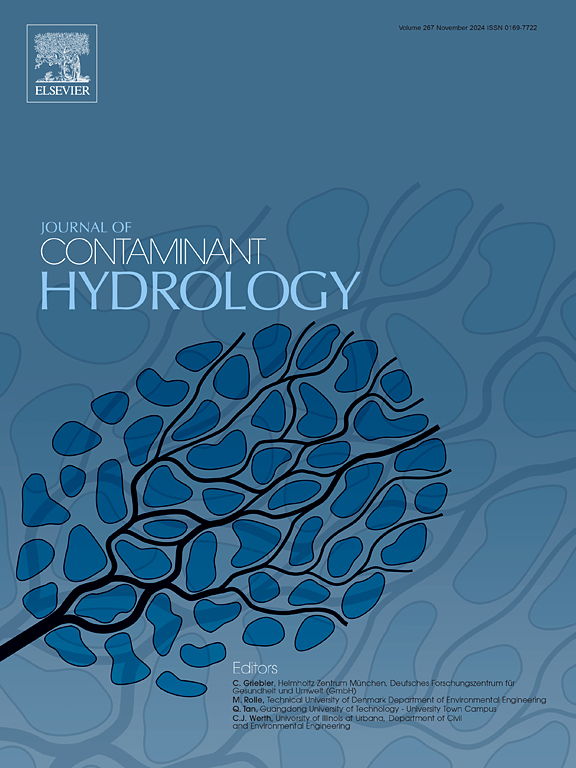基于深度学习的“分解-优化-重建”方法在中国北方典型气候和人为调节流域径流预测中的潜力研究
IF 4.4
3区 环境科学与生态学
Q2 ENVIRONMENTAL SCIENCES
引用次数: 0
摘要
河流径流主要受自然气候或人类活动的影响,径流序列呈现出非平稳性等复杂特征,这给径流的准确预测带来了挑战。为解决传统深度学习方法预测精度受径流非平稳性影响的问题,基于“分解-优化-重建”的思想,构建了引入变分模态分解(VMD)和鲸鱼优化算法(WOA)的组合模型,对双向长短期记忆神经网络(BiLSTM)进行优化(VMD-WOA-BiLSTM)。将该组合模型应用于中国北方典型气候与人为调节流域,特别是海拉尔河流域和大黑河流域半干旱区的径流预测。结果表明,“分解-优化-重建”模型显著提高了预测精度。该模型在上游径流预测方面表现出色,因为与下游地区相比,上游地区的人类活动较少。当应用于河流时,它更准确地预测气候驱动的径流变化,并且对于总径流量相对较大的河流表现更好,这可能是因为与总径流量较小的河流相比,它们受极端降水事件的影响较小。不同季节模型的预测效果不同,这可能与径流的季节特征和模型本身的预测能力有关。该模型在不同河段和流域均取得了较好的径流量预测效果,对中国北方气候和人为调节的流域具有广泛的适用性。本文章由计算机程序翻译,如有差异,请以英文原文为准。

Research on the potential of the deep learning-based “decomposition-optimization-reconstruction” method in runoff prediction for typical climate- and human-regulated basins in northern China
River runoff may be affected mainly by the natural climate or human activities, and runoff series present complex characteristics, such as non-stationarity, which makes accurate prediction of runoff challenging. To address the problem that the prediction accuracy of the traditional deep learning methods is affected by the non-stationarity of runoff, which is based on the idea of “decomposition - optimization – reconstruction”, this paper constructs a combination model that introduces variational mode decomposition (VMD) and the whale optimization algorithm (WOA) to optimize a bidirectional long short-term memory neural network (BiLSTM) (VMD-WOA-BiLSTM). The combination model is applied to runoff prediction in typical climate- and human-regulated watersheds in northern China, specifically in the semi-arid regions of the Hailar River Basin and the Dahei River Basin. The results show that the “decomposition-optimization-reconstruction” model significantly improves the prediction accuracy. The model excels in upstream runoff prediction because there are fewer human activities in those areas compared to the downstream areas. When applied to rivers, it more accurately forecasts climate-driven runoff changes and performs better for rivers with relatively large total runoff, which may be because they are less impacted by extreme precipitation events compared with rivers with small total runoff. The model's prediction performance varies across different seasons, which may be related to the seasonal characteristics of runoff and the model's inherent predictive capabilities. The combined model achieves excellent runoff prediction results across various river segments and basins, demonstrating its wide applicability for climate- and human-regulated basins in northern China.
求助全文
通过发布文献求助,成功后即可免费获取论文全文。
去求助
来源期刊

Journal of contaminant hydrology
环境科学-地球科学综合
CiteScore
6.80
自引率
2.80%
发文量
129
审稿时长
68 days
期刊介绍:
The Journal of Contaminant Hydrology is an international journal publishing scientific articles pertaining to the contamination of subsurface water resources. Emphasis is placed on investigations of the physical, chemical, and biological processes influencing the behavior and fate of organic and inorganic contaminants in the unsaturated (vadose) and saturated (groundwater) zones, as well as at groundwater-surface water interfaces. The ecological impacts of contaminants transported both from and to aquifers are of interest. Articles on contamination of surface water only, without a link to groundwater, are out of the scope. Broad latitude is allowed in identifying contaminants of interest, and include legacy and emerging pollutants, nutrients, nanoparticles, pathogenic microorganisms (e.g., bacteria, viruses, protozoa), microplastics, and various constituents associated with energy production (e.g., methane, carbon dioxide, hydrogen sulfide).
The journal''s scope embraces a wide range of topics including: experimental investigations of contaminant sorption, diffusion, transformation, volatilization and transport in the surface and subsurface; characterization of soil and aquifer properties only as they influence contaminant behavior; development and testing of mathematical models of contaminant behaviour; innovative techniques for restoration of contaminated sites; development of new tools or techniques for monitoring the extent of soil and groundwater contamination; transformation of contaminants in the hyporheic zone; effects of contaminants traversing the hyporheic zone on surface water and groundwater ecosystems; subsurface carbon sequestration and/or turnover; and migration of fluids associated with energy production into groundwater.
 求助内容:
求助内容: 应助结果提醒方式:
应助结果提醒方式:


